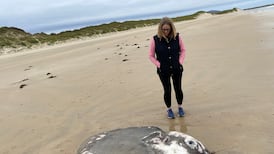Some of Ireland's most environmentally sensitive farmers, who agreed to change farming practices to save Ireland's most endangered bird, the corncrake, from extinction say they are now facing the same fate. The farmers, who own callow or flood meadows along the Shannon valley between Lough Derg and Lough Ree, are paid £40 per acre not to mow meadows until August 1st, after the corncrakes have reared their first brood of chicks.
The 200 farmers who preserve the corncrake habitat were caught by flooding caused by the rain which hit Ireland just after the August 1st deadline.
Now some, like Mr Brendan Glynn from Lusnagh, Banagher, have lost all their winter fodder for the sake of the corncrake. He is facing losses of more than £2,500.
Yesterday he and others, known along the Shannon as "the corncrake farmers", called on the Wildlife Service to increase the payments and bring them into line with EU setaside payments, which now run at £136 per acre.
The flooding is bad news for the corncrake project, whose director, Ms Katherine Casey, predicted that the flooding would wipe out the second hatch of corncrake eggs and reverse the recent upward trend in numbers of the birds.
She said the number of corncrakes on the callows was probably now just 100, concentrated in the 600 hectares along the floodplains between Lough Ree and Lough Derg.
She said this year the corncrake project had counted 149 calling male birds in the entire country; 77 were located in Donegal, 18 in Mayo and the remainder on the callows. There was probably one female for each calling male.
Replying to the request for more money for involvement in the project, she said she would like to see the farmers being paid more to save the corncrake, but would be opposed to a setaside scheme because the habitat used by the bird had to be managed.








